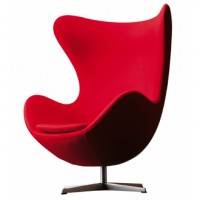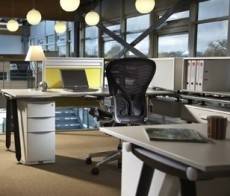April 12, 2015
A preview of this year’s Milan International Furniture Fair 0
 One of the least remarked upon consequences of the digital revolution of the past two decades has been its impact on the world of exhibitions. Not so long ago, these were one of the few ways people had of finding out about new products, firms, services and technologies. Now we can find as much as we would like about all of that kind of thing at any time, and so the exhibition has had to adopt a new role. In many ways, the changing role of shows has followed the same trajectory as that of offices. Far from becoming irrelevant or extinct, as some people predicted, they have instead developed a new prominence as platforms for new ideas, the sharing of information, meeting new people and reacquainting ourselves with old friends in the analogue world.
One of the least remarked upon consequences of the digital revolution of the past two decades has been its impact on the world of exhibitions. Not so long ago, these were one of the few ways people had of finding out about new products, firms, services and technologies. Now we can find as much as we would like about all of that kind of thing at any time, and so the exhibition has had to adopt a new role. In many ways, the changing role of shows has followed the same trajectory as that of offices. Far from becoming irrelevant or extinct, as some people predicted, they have instead developed a new prominence as platforms for new ideas, the sharing of information, meeting new people and reacquainting ourselves with old friends in the analogue world.










 Amongst all the talk about Generation Y and its impact on the world of work, it can be easy to miss the fact that the modern workplace is not defined by one particular generation, but a number of them. The multi-generational workplace has significant implications for the way we design and manage offices. While we must avoid the more obvious stereotypes about the needs of different age groups, we must still offer spaces that can meet a wide range of cultural, physical and technological needs if we are to create productive workplaces.The latest organisation to bang the drum for the multi-generational workplace is the Chartered Institute of Personnel and Development. It has published new research together with the Scottish Centre for Healthy Working Lives into the experiences and attitudes of SMEs towards age diversity at work.
Amongst all the talk about Generation Y and its impact on the world of work, it can be easy to miss the fact that the modern workplace is not defined by one particular generation, but a number of them. The multi-generational workplace has significant implications for the way we design and manage offices. While we must avoid the more obvious stereotypes about the needs of different age groups, we must still offer spaces that can meet a wide range of cultural, physical and technological needs if we are to create productive workplaces.The latest organisation to bang the drum for the multi-generational workplace is the Chartered Institute of Personnel and Development. It has published new research together with the Scottish Centre for Healthy Working Lives into the experiences and attitudes of SMEs towards age diversity at work. At the end of July, the UK Government introduced new legislation that allowed any employee with more than six months in a job to apply to their employer for some form of flexible working arrangements. Now, research from Sage claims that a third of small businesses are ignoring the legislation, a fact which might be interpreted as suggesting that the UK’s SMEs are not so keen on the idea. What other data suggests, however, is that they’re probably more likely to offer flexible working than larger firms. This can only mean that it’s the legislation that’s the problem, not the practice. Leaving aside the ten percent of SMEs who the Sage report claimed were unaware of the new rules, this still leaves a large number of smaller businesses open to litigation and industrial tribunals. But, as the Federation of Small Businesses warned ahead of the new law’s introduction, the right to request was always likely to lead to headaches for business owners anyway.
At the end of July, the UK Government introduced new legislation that allowed any employee with more than six months in a job to apply to their employer for some form of flexible working arrangements. Now, research from Sage claims that a third of small businesses are ignoring the legislation, a fact which might be interpreted as suggesting that the UK’s SMEs are not so keen on the idea. What other data suggests, however, is that they’re probably more likely to offer flexible working than larger firms. This can only mean that it’s the legislation that’s the problem, not the practice. Leaving aside the ten percent of SMEs who the Sage report claimed were unaware of the new rules, this still leaves a large number of smaller businesses open to litigation and industrial tribunals. But, as the Federation of Small Businesses warned ahead of the new law’s introduction, the right to request was always likely to lead to headaches for business owners anyway. Given the track record of people when it comes to making predictions about the future, it’s easy to grow cynical, especially when it involves a profession as subject to the vagaries of technological and cultural change as facilities management. But while we should be wary of more fanciful and long term thinking, any natural scepticism shouldn’t blind us to those predictions that we know will largely come true, especially those based on what we know is happening already. For example, recent research carried out by Cass Business School and Henley Business School and presented in the book
Given the track record of people when it comes to making predictions about the future, it’s easy to grow cynical, especially when it involves a profession as subject to the vagaries of technological and cultural change as facilities management. But while we should be wary of more fanciful and long term thinking, any natural scepticism shouldn’t blind us to those predictions that we know will largely come true, especially those based on what we know is happening already. For example, recent research carried out by Cass Business School and Henley Business School and presented in the book 









June 2, 2015
Five of the most noticeable ways your office has got it in for you
by Justin Miller • Comment, Furniture, Lighting, Wellbeing, Workplace design
(more…)